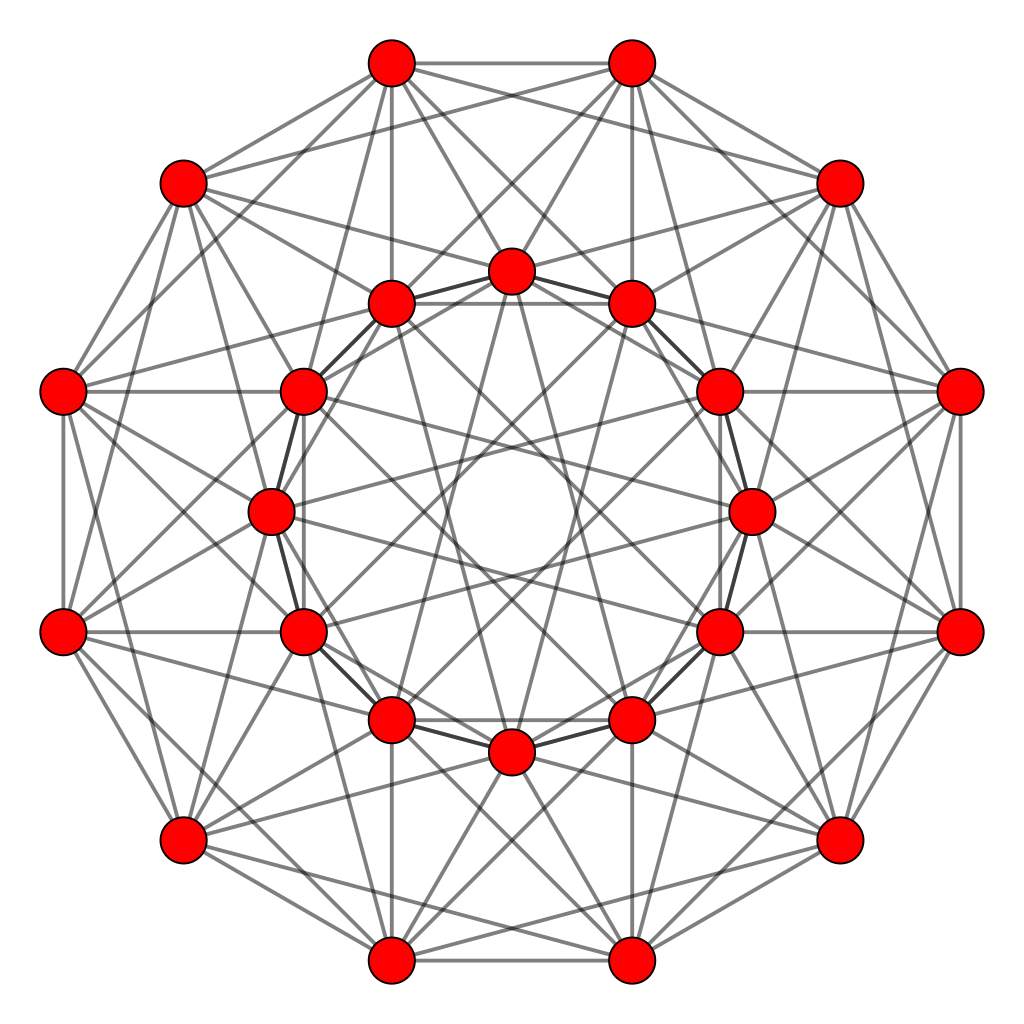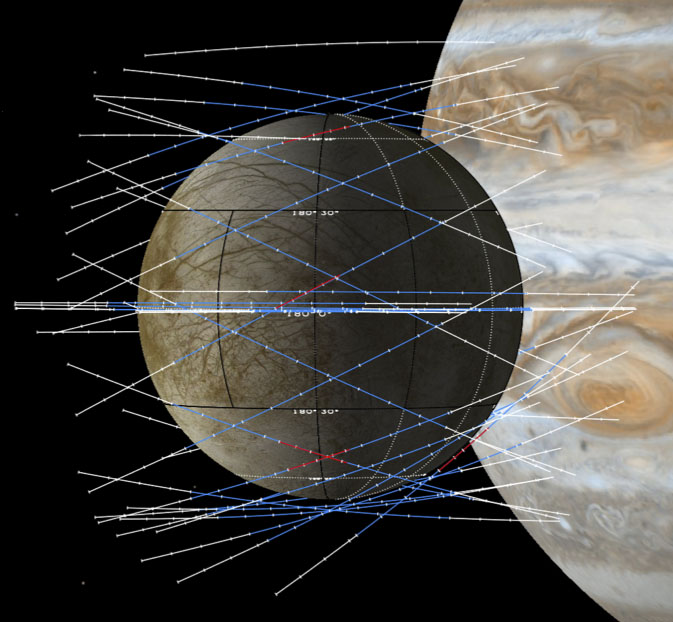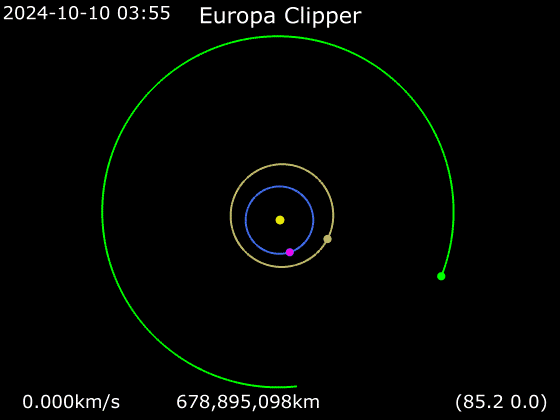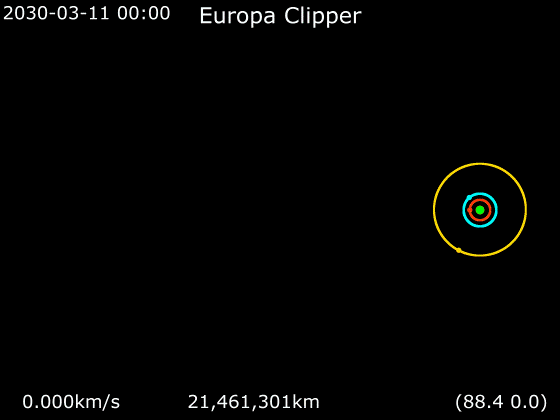

Wow. You can now get cells to automatically record their history in their own DNA!
Scientists altered the stem cells of mouse embryos so that now and then all the cells descended from these insert a short piece of information — a 'barcode' — into their genome.
This barcode randomly changes with time, and new copies keep getting added to the genome.
Later, you can read off these barcodes optically by shining light at a cell!
By comparing the results for many different cells, you can establish a lineage — a literal 'geneology' — of each cell.
One of these techniques is called MEMOIR — one of those cute acronyms scientists love. It stands for Memory by Engineered Mutagenesis with Optical In Situ Readout:

Once we knew just one solar system. Now we can see hundreds of solar systems and learn how they work on average! We are learning amazing things, like this:
Above you see a chart showing planets whose year is 25 Earth days or less. These planets are close to their suns. You'll see a big blob of planets with mass 10-20 times that of the Earth, whose year is just 1-10 days long! These are called hot Neptunes.
But there's an interesting shortage of slightly less massive planets that are quite close to their sun. This is called the Neptunian desert. And there's another less dramatic shortage of planets in the Neptunian savanna. Both these need to be explained.
Keith Cowing writes:
“The Neptunian Ridge stands tall above the Desert and Savanna. It provides us with a key to understanding the physical mechanisms shaping the Desert,” points out Vincent Bourrier. Most Neptunes may be distributed over the Savanna and Desert early in their life by migrating within the disk in which they formed. The existence of the Ridge suggests that some Neptune-size planets are brought to this region by a type of migration called high-eccentricity migration, which occurs later in their life and allow them to survive erosion from the stars.This is from here:These migration processes, coupled with photoevaporation, likely shape the distinct features observed in the Neptunian landscape. The similarities between the Neptunian Ridge and another feature in the exoplanet distribution, the hot Jupiter pileup, suggests that similar evolutionary processes may influence both groups of planets.

Hey, they did it! People have known for a long time that in 4 dimensions you can pack equal-sized balls so that each touches 24 others. In 2008 someone showed that's the best you can do. But in April this year, three mathematicians showed there's essentially just one way you can accomplish this!
This way is easy to describe. Take the points whose coordinates are all integers, together with those whose coordinates are all integers plus 1/2. Use each of these points as the center of a ball of radius 1/2. Then each ball touches 24 others. This pattern is called the D4 lattice. The image here shows the centers of the 24 balls touching one ball... projected down to two dimensions.
The new result shows that if you pack equal-sized balls in 4 dimensions so that each touches 24 others, you're forced to create a version of the D4 lattice - possibly rotated, translated and/or rescaled.
This sort of thing is hard to show: it took a lot of fancy math and two weeks of calculation on a standard desktop computer. I believe only other dimensions where we know a result like this are 1, 2, 8 and 24. In dimension 3 it's just false: you can pack equal-sized balls so that each touches 12 others, and this is the best you can do, but there are uncountably many different ways to do it!
Here's the new paper:

The Europa Clipper finally took off! It'll reach this icy, water-filled moon of Jupiter in 2030. But it won't orbit that moon. Instead, it will fly by Europa 44 times, tracing out these wonderful tracks.
Why not orbit Europa? There's too much radiation that close to Jupiter, and the Clipper can collect data much faster than it can transmit it to Earth. If it orbited Europa it would fry before it could tell us very much!
Thus, the Clipper will spend most of its time farther from Jupiter, transmitting data to Earth. Using gravity assists from 2 other moons, it will occasionally swoop down, zip past Europa, and make more measurements.
In its 3½ year life, the Europa Clipper will get 2.8 megarads of radiation from Jupiter. This is about 280 times the amount that would kill you! Jupiter is pretty, but don't try to live nearby.

Here is the path the Europa Clipper will take on its journey from Earth to Jupiter. Gravity boosts from Mars and Earth will speed it up enough to reach Jupiter.
The Sun's gravity is powerful, but we've learned how cleverly steal energy from planets to help spacecraft escape its attraction!

Here is the path the Europa Clipper will take once it reaches Jupiter. The orbit of Europa is shown in aqua — the goal is to swing past it 44 times before the spacecraft dies. But to make the Clipper follow its crazy path, the gravity of Jupiter's moons Callisto and Io will be needed!
Callisto's orbit is shown in yellow, and Io is shown in red.
Finally, here is an artist's conception of what a cross-section of Europa might look like. The ice above the ocean may be 20 kilometers thick.

I love this lecture by Nima Arkani-Hamed. He's entertaining and clear — and what he says here is astounding.
After he gets rolling, he explains how particle physicists could discover some famous shapes called 'associahedra' just by keeping track of the poles in the scattering matrix. Since I already know associahedra from category theory and topology, this really wowed me.
He also keeps prerequisites to a minimum. Well, okay: if don't know quantum field theory don't watch this. You need to know the Feynman rules, and how Feynman diagrams have poles when the energy-momentum of a virtual particle in the diagram goes 'on shell' — i.e., takes a value that a real particle could have. It also helps to have seen how Feynman diagrams for gauge bosons look like they're made of ribbons. But he's remarkably good at keeping things simple. What I don't love is how he covers up some of his assumptions. He's talking about a spin-0 field \(\Phi\) of mass \(m\) that takes values in the Lie algebra \(\mathfrak{su}(n)\), with a cubic self-interaction $$ \mathrm{tr}(\Phi^3) $$ This is not like our universe! When he sets \(m = 0\) this theory would apply to nonexistent 'spin-zero gluons'.
More importantly, he only considers planar, tree-shaped Feynman diagrams! This restriction kicks in naturally only when we consider the limit \(n \to \infty\). Things simplify a lot then.
So, while this is the best talk I've heard in a long time, there's a bit of salesmanship involved here. And by the time the pop science media get ahold of his work, they say stuff like "physicists have discovered a jewel-shaped geometric object that challenges the notion that space and time are fundamental constituents of nature".
But still, a great talk.
For a more detailed and carefully considered appraisal, read this:
This Buddha statue was found on an island in a lake in Sweden — a Viking trade and manufacturing center. It dates to the 6th century, and it was made in Kashmir. Amazing evidence of early trade or conquest!
The island is called Helgö, and Vikings worked there from the 6th to 11th centuries. This statue is part of the "Helgö treasure", a collection that also includes the elaborate head of a bishop's staff from Ireland, and a bronze ladle from North Africa — probably Egypt.
Vikings were active in the Mediterranean. There are records of them attacking Spain and north Africa. Many also joined the Varangian Guard, an elite unit of the Byzantine army, which was active from the 9th to 14th centuries. In fact, so many Vikings joined that the Swedes passed a law saying that nobody could inherit while in Byzantium, to reduce the emigration!
Vikings also worked in Kiev, and they made it as far as Baghdad. They weren't just fighters: they did a lot of trade, and agriculture.
Another cool find: in 2015, a silver alloy ring was discovered in a 9th century woman's grave at a Viking trading center in Birka, Sweden. It's set with a violet stone inscribed with Arabic Kufic writing, interpreted as reading “il-la-lah”, for “or to Allah”.
The 10th-century Arab traveler Ahmad Ibn Fadlan wrote:
I have never seen bodies as nearly perfect as theirs. As tall as palm trees, fair and reddish, they wear neither tunics nor kaftans. Every man wears a cloak with which he covers half of his body, so that one arm is uncovered. They carry axes, swords, daggers and always have them to hand. They use Frankish swords with broad, ridged blades.
For more, read this about the Helgö treasure:
I love reading about the medieval physics: you can see people struggling against mental traps, often failing, but still putting up a fight. We shouldn't laugh at them: theoretical physicists may be stuck in their own traps today! Good new ideas often seem obvious in retrospect... but only in retrospect.
For example: Aristotle argued that a vacuum is impossible, because the velocity of an object equals the force on it divided by the resistance of the medium it's moving through. A vacuum offers no resistance — so an object would move through it at infinite speed!
Around 1100, the medieval Arab physicist Ibn Bajja disagreed. He argued that the celestial spheres — i.e. the planets and stars — move at finite speeds even in the vacuum. So, he said, we should subtract the resistance of the medium from the object's natural speed, not divide by it.
Averroes fought back, agreeing with Aristotle. Later, Thomas Aquinas sided with Ibn Bajja (who was known in Latin as Avempace). By the 1300s, most Western natural philosophers had sided with Aristotle.
There are definitely problems with the subtraction theory. What if the resistance exceeds the force? Does the object move backwards? But back then they didn't know about negative numbers! So maybe proponents of the subtraction theory would say an object stands still if you push on it with insufficient force to overcome the resistance.
All this reached a pinnacle of complexity in Thomas Bradwardine's 1328 Treatise on the Ratios of Speeds in Motions. He analyzed four theories and then proposed his own. Though he didn't phrase it this way, it seems he argued that speed is proportional to the logarithm of the force over resistance. For example if you cube the ratio of force to resistance, you triple the object's speed.
This theory, which came to be called 'Bradwardine's rule', seems terrible to me. It doesn't solve the problem of infinite speeds in a vacuum, and it says some force is required just to hold an object still. In fact, I suspect I'm misinterpreting this theory! But anyway, it caught on.
In Oxford, Richard Swineshead and John Dumbleton applied Bradwardine's rule to solve 'sophisms', the logical and physical puzzles that were starting to become important in the undergraduate curriculum. A bit later this rule appeared in Paris, in the works of Jean Buridan and Albert of Saxony. By the middle of the 1300s it caught on in Padua and elsewhere. And Swineshead, nicknamed The Calculator, used it to study whether a body acts as a unified whole or as the sum of its parts. He imagined a long, uniform, heavy body falling in a vacuum down a tunnel through the center of the earth. Somehow he concluded that it would take an infinite time to reach the center. Don't ask me how — I don't know! But anyway, he rejected this conclusion as unphysical.
So, a lot of struggles!
I'm getting this stuff from Walter Roy Laird's article "Change and Motion" in the Cambridge History of Science, volume 2 — the one on medieval science.
October 29, 2024
This is pretty hilarious. You may have heard the legend where the inventor of chess asks the king to reward him by putting 1 wheat grain on the first square of the board, 2 on the second, 4 on the third and so on. Now it's happening in real life!
Earlier this year, a Russian court ordered Google to restore Russian state media accounts on YouTube. They imposed a fine of 100,000 rubles, doubling each week. As of now, Google has been fined 2,000,000,000,000,000,000,000,000,000,000,000,000 rubles. That's 2 × 1036 rubles, or 2 undecillion rubles.
Luckily this equivalent to a mere 2 × 1034 dollars. And since the volume of the observable universe is roughly 1078 cubic meters, there's still plenty of room for Google to be obnoxious and pay this off in pennies.
October 31, 2024

We can be kind to nature. We don't always have to exploit it.
Since 1860, Britain has lost 85% of its salt marshes. A decade ago, this region was torn up by bulldozers and excavators. But on Sept. 8, 2014, the tide was allowed to come in. Water flowed through a new gap. This was the start of an experiment that continues to this day.
Now Steart Marsh acts as a bulwark against flooding, absorbing and slowing tides. Even last winter — the wettest anyone in the area could remember — the village at one edge of the peninsula did not flood.
The area is also a haven for wildlife. The birds include godwits, plovers, oystercatchers, egrets, herons, and a growing population of avocets: black-and-white wading birds with distinctive curling beaks.
There's a lot more to this story, though! Nothing is ever simple. For more, read these: